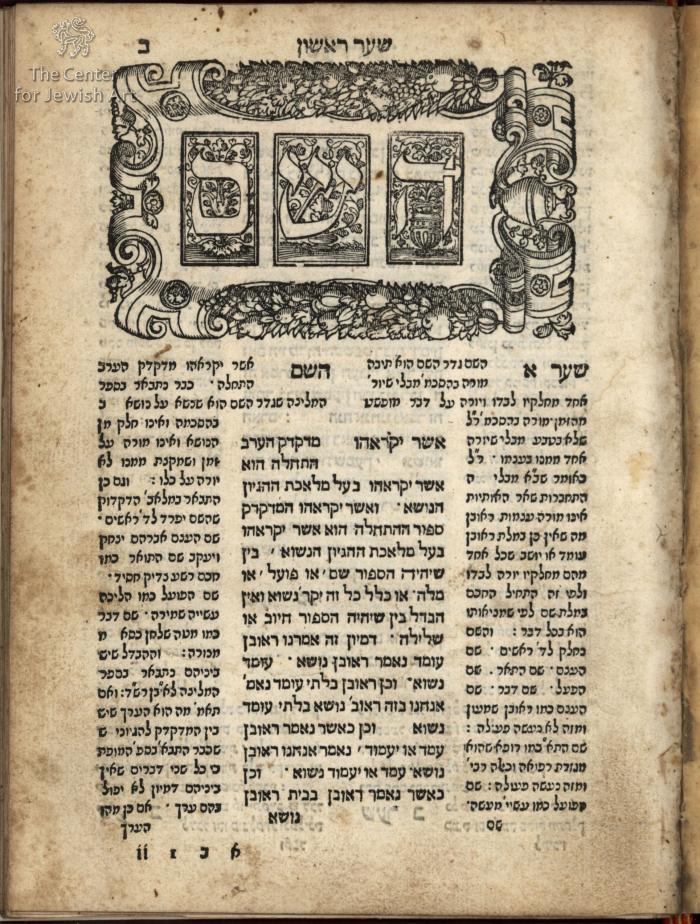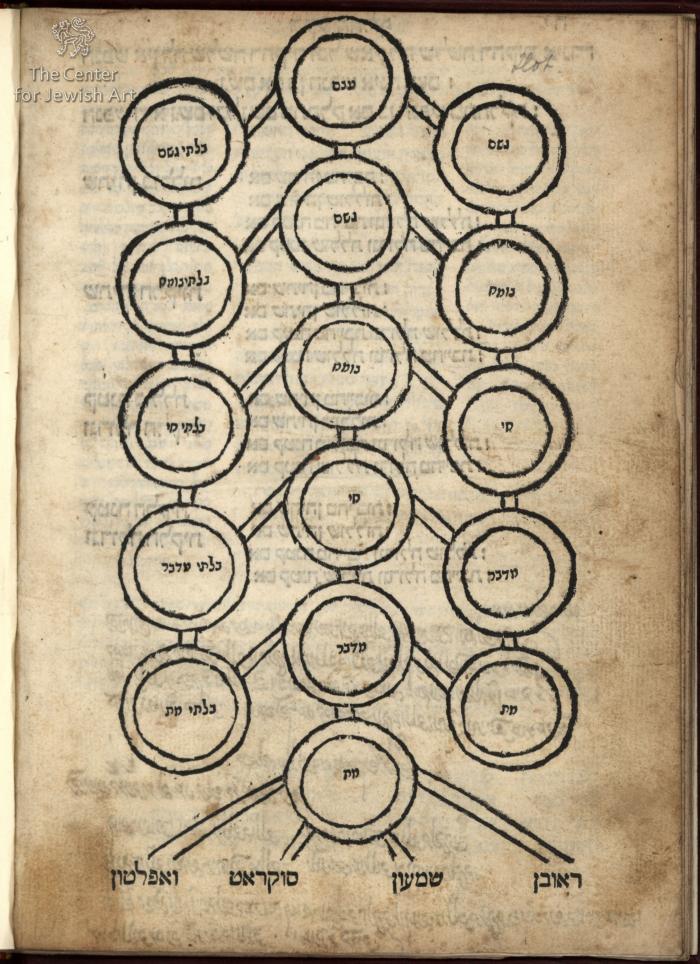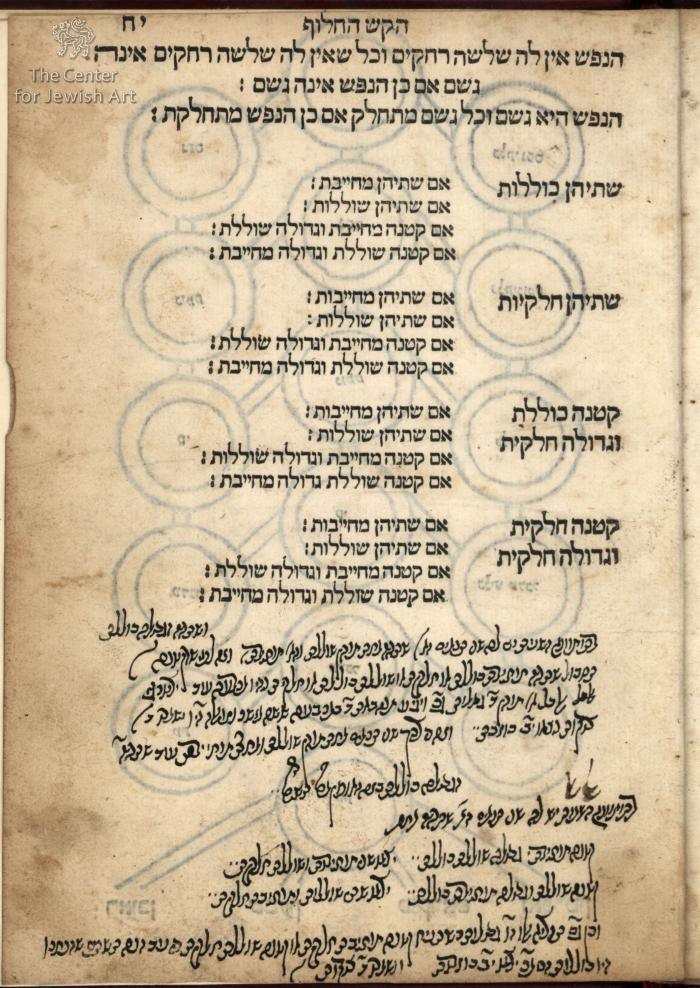Obj. ID: 37346 Milot ha-Hegayon by Moshe ben Maimon, Venice, 1546

sub-set tree:
This text was prepared by William Gross:
Book explaining complex philosophical concepts authored by Rabbeinu Moshe ben Meimon (Rambam), along with two other early commentaries whose authors are unknown. This sefer is a fundamental source in understanding concepts and ideas discussed in philosophy. Milos HaHigayon was first authored by the Rambam in Arabic and then translated into Lashon HaKodesh by the renowned translator- Rabbi Moshe ibn Tibbon.
Rabbi Yedidya Tiah Weil (1722-1806) was the son of the Korban Nesanel and a prized disciple of Rabbi Yehonasan Eibeshitz. He served as the ab”d of Karlsruhe.
Published in Cremona, 1666.20 leaves
A treatise on logic by Maimonides, translated into Hebrew (from the Arabic original) by Moses ibn Tibbon. It is the first extant work on logic written by a Jew. This is the first edition of this treatise; a second edition was published in Venice just 4 years later in 1550.
One of the Hebrew presses in Italy was that of a wealthy and powerful Christian gentleman in Venice, Marco Antonio Giustiniani. He began printing important books in 1545, but ultimately published Hebrew books for only 7 years. His real importance for the history of Hebrew printing was his extremely intense rivalry with the Hebrew printing house of Alvise Bragadini. This personal competition of the two printers ultimately led to the papal decree of 1553 instructing the burning of all existing editions of the Talmud. Thousands of Hebrew books were burned in the public squares of Italian cities, bringing a disaster of severe proportions on the Jews of Italy. Hebrew printing was not resumed in Venice until 1563.





